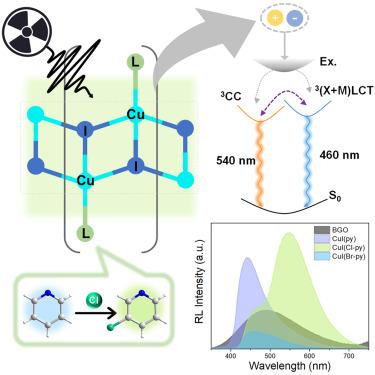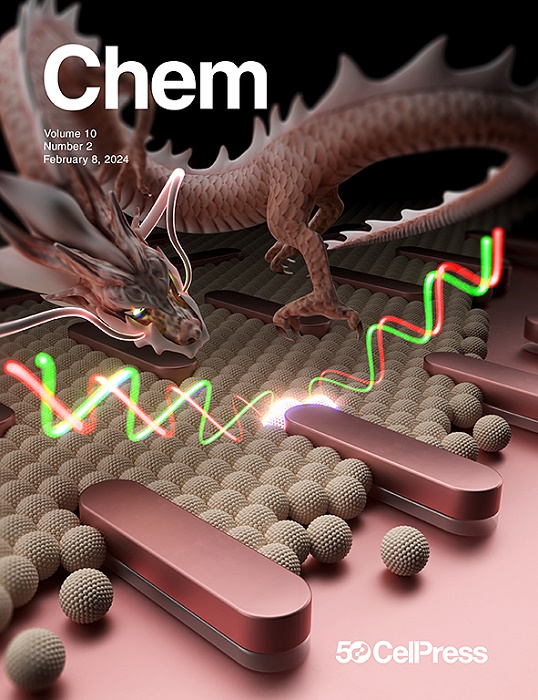Enhanced X-ray luminescence in one-dimensional Cu–I coordination polymers via ligand halogen engineering
IF 19.1
1区 化学
Q1 CHEMISTRY, MULTIDISCIPLINARY
引用次数: 0
Abstract
Cu(I) halide-based scintillators are emerging as eco-friendly alternatives to traditional X-ray imaging scintillators because of their high luminescence efficiency and solution processability. Although much progress has been made in zero-dimensional (0D) Cu–I cluster scintillators, there has been limited focus on one-dimensional (1D) Cu–I coordination polymers because of their lower luminescence efficiencies. This study presents a ligand halogen engineering strategy for significantly enhancing the photoluminescence efficiency of 1D Cu–I coordination polymers by utilizing halogen-based chemical modifications. The chlorine-modified ligands increase structural rigidity, reducing electronic repulsion between copper and iodine atoms and minimizing photon loss through non-radiative recombination pathways, resulting in an impressive photoluminescence quantum yield of nearly 100%. The designed scintillators demonstrate improved radioluminescence intensity, low detection limits, and exceptional spatial resolution (16 lp/mm). This research offers an approach for creating highly emissive 1D Cu–I coordination polymers and highlights their potential in X-ray imaging applications in medical diagnosis and security checks.

求助全文
约1分钟内获得全文
求助全文
来源期刊

Chem
Environmental Science-Environmental Chemistry
CiteScore
32.40
自引率
1.30%
发文量
281
期刊介绍:
Chem, affiliated with Cell as its sister journal, serves as a platform for groundbreaking research and illustrates how fundamental inquiries in chemistry and its related fields can contribute to addressing future global challenges. It was established in 2016, and is currently edited by Robert Eagling.
 求助内容:
求助内容: 应助结果提醒方式:
应助结果提醒方式:


